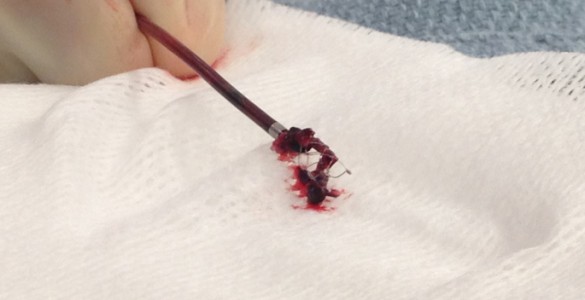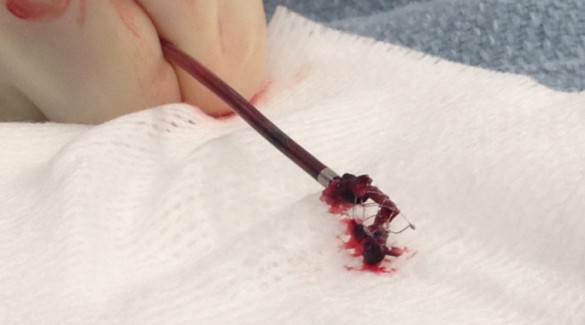
For nearly a decade, Vanderbilt University Medical Center has been at the forefront of stroke treatment using endovascular neuro-interventional techniques. Similar to procedures done for a heart attack, interventional stroke treatment employs suction and retrievers to remove blood clots.
Research published recently in the New England Journal of Medicine and presented at the International Stroke Conference held in Nashville in February has now definitively proven this treatment to be safe and effective.
“We’ve always believed that intervention is a great option for the appropriate patients, but now we have additional evidence to back that, and to help identify those who will benefit most,” said Michael Froehler, M.D., Ph.D., assistant professor of Neurology and Neurosurgery and director of the Cerebrovascular Program.
According to the Centers for Disease Control and Prevention, stroke is a leading cause of death in the United States, killing nearly 130,000 Americans each year — one of every 20 deaths. It is even more prevalent in the South.
Since 1996, standard of care therapy for stroke has been the intravenous administration of the “clot busting” drug tPA (tissue plasminogen activator).
“But tPA has its limitations,” said Matthew Fusco, M.D., assistant professor of Neurosurgery. “It must be given within three or four-and-a-half hours of stroke onset, and many patients don’t reach the hospital in time. It also isn’t good for patients on blood thinners or who have recently had surgery. And the largest clots, that cause the biggest strokes, are more unlikely to respond to tPA.”

On the other hand, interventional techniques also carry the risk of hemorrhage, or bleeding in the brain. Deciding which patients to treat is a balance between risk versus the benefit of restoring blood flow quickly.
Last year, Vanderbilt opened an advanced stroke treatment operating suite, offering improved facilities and imaging for faster, more accurate treatment.
“This new technology plus our stroke team and our partners in the Emergency Department and the Neurological Intensive Care Unit make Vanderbilt a premier destination for stroke treatment,” Froehler said.
“With the recognition of endovascular treatment as the new standard of care for many stroke patients, we now need to partner with our colleagues at other hospitals in the region to rapidly triage and transfer patients so they can be treated quickly and appropriately.”
The Vanderbilt Stroke Center is a designated Comprehensive Stroke Center by the Joint Commission. It also holds the American Stroke Association’s Get With The Guidelines: Gold Plus and Target Stroke: Honor Roll awards and works closely with the American Hospital Association to monitor quality and efficiency.
“Our Stroke Center was founded in 1998 and continues to be on the cutting edge of stroke care,” said Howard Kirshner, M.D., professor of Neurology and director of the Vanderbilt Stroke Center. “It’s truly a team effort from a committed group of care providers who always put the well-being of our patients first.”
The Stroke Center participated in many of the endovascular stroke trials that were presented at the recent International Stroke Conference, and currently has 22 cerebrovascular clinical trials either enrolling or in the follow-up stage.
The Vanderbilt Stroke and Cerebrovascular Service faculty include Kirshner, Anne O’Duffy, M.D., Derek Riebau, M.D., Lisa Hermann, M.D., BethAnn McLaughlin, Ph.D., Lori Jordan, M.D., Kiersten Espaillat, DNP, Froehler and Fusco.















